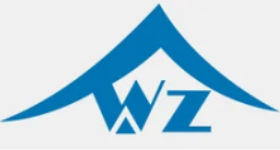Pressure Points: Demystifying the Internal Forces in Sports Domes
Understanding the Internal Forces in Sports Domes
Sports domes have become increasingly popular in recent years, providing athletes with year-round training opportunities regardless of weather conditions. These impressive structures are engineered to withstand various external forces, such as wind and snow loads, but it is equally important to consider the internal forces acting on the dome's structure. In this article, we will explore the pressure points within sports domes, demystifying the internal forces that play a crucial role in their stability and longevity.
The Dome's Foundation: A Key Pressure Point
When it comes to sports dome construction, the foundation serves as a critical pressure point. The weight of the dome and the forces exerted on it must be effectively transferred to the ground to ensure stability. The foundation must be designed to withstand the dome's weight and any additional loads, such as equipment and spectators. By properly considering the internal forces at the dome's foundation, architects and engineers can ensure a safe and durable structure.
Arch and Truss Systems: Distributing Internal Forces
The arch and truss systems used in sports dome construction play a crucial role in distributing internal forces. These systems are designed to carry the weight of the dome and transfer it to the foundation. By evenly distributing the internal forces, the arch and truss systems help maintain the structural integrity of the dome. It is essential to choose a design that can withstand the expected loads and optimize the efficiency of force distribution.
Internal Pressure: The Balancing Act
Internal pressure is another important factor to consider when demystifying the internal forces in sports domes. The difference in air pressure between the interior and exterior of the dome can exert significant forces on the structure. To ensure stability, it is crucial to maintain a proper balance of internal pressure. This can be achieved through the use of ventilation systems that allow for controlled airflow and pressure regulation.
Wind Loads: A Constant Challenge
One of the most significant external forces that sports domes face is wind. Wind loads can exert substantial pressure on the dome's surface, creating internal forces that need to be carefully managed. By considering the anticipated wind loads during the design and construction phases, engineers can create a dome that can withstand these forces and maintain its structural integrity. Wind tunnel testing and computer simulations are often used to assess the impact of wind loads on sports domes.
Snow Loads: A Weighty Consideration
In regions with heavy snowfall, snow loads pose a significant challenge for sports dome structures. The accumulated weight of snow on the dome's surface can create internal forces that, if not properly managed, can lead to structural issues. Designing for snow loads involves considering factors such as snow density, accumulation rates, and expected weather conditions. By accounting for these variables, engineers can ensure that the dome can safely support the weight of snow and prevent any potential damage.
Temperature and Humidity: Influencing Internal Forces
Temperature and humidity are factors that can significantly influence the internal forces within sports domes. Extreme temperatures can cause materials to expand or contract, potentially leading to structural issues if not accounted for in the design and construction. Humidity levels can also impact the dome's internal environment, affecting the performance and lifespan of the structure. Proper insulation and climate control systems are essential in maintaining a stable internal environment and mitigating the impact of temperature and humidity fluctuations.
Impact of External Forces on Internal Forces
While internal forces are important to consider in sports dome construction, it is crucial to recognize the interplay between internal and external forces. External forces, such as wind and snow loads, can create internal forces that need to be effectively managed. By designing a dome that can withstand these external forces, architects and engineers can ensure the structural integrity and longevity of the structure.
The Role of Maintenance in Managing Internal Forces
Regular maintenance plays a vital role in managing internal forces in sports domes. Inspections, repairs, and updates are necessary to identify and address any potential issues that could compromise the dome's stability. By proactively managing internal forces through maintenance, dome owners can extend the lifespan of their structure and provide a safe environment for athletes.
Conclusion
Sports domes are impressive structures that require careful consideration of internal forces to ensure their stability and longevity. By understanding the pressure points within these domes and properly managing internal forces, architects and engineers can create structures that stand the test of time. From the foundation to the arch and truss systems, and from internal pressure to external forces, each aspect contributes to the overall performance and safety of the sports dome. By demystifying the internal forces, we can appreciate the intricate engineering behind these remarkable structures.

